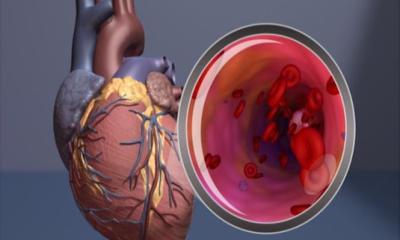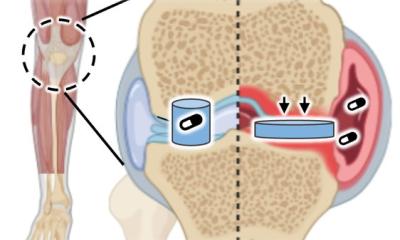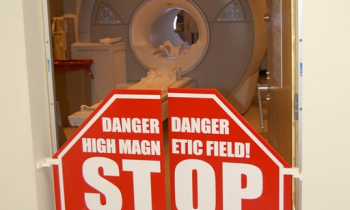Quips and Pain Out provide worldwide pain data
Around 50% of surgical patients experience moderate to severe postoperative pain, and ‘minor’ surgery patients receive little pain care.
Around 50% of surgical patients experience moderate to severe postoperative pain, and ‘minor’ surgery patients receive little pain care.

Among 40 million surgeries performed in Europe annually, and more than 50 percent of the patients experience moderate to severe postoperative pain. The price of poor pain management is high: Pain impedes recovery, causes suffering and consumes inordinate amounts of healthcare resources. However, there is hope. Optimised pain therapy can significantly reduce intensity and duration of pain. This is where QUIPS (Quality improvement of postsurgical pain therapy) and PAIN OUT (Improvement of postoperative PAIN OUTcome) come into play.
Widespread interest in the German Quips project, which has measured the quality of post-operative pain treatment in over 200 hospitals for over a decade, and its international counterpart Pain Out, which began in 2009, clearly indicates that most clinicians want to ensure patients recover with the least possible pain.
Professor Winfried Meissner, project coordinator and Head of the Department of Palliative Care at Jena University Hospital discussed pain management with European Hospital correspondent Ralf Mateblowski, who asked why pain management needs benchmark projects such as Quips and Pain Out and what they aim to achieve.
Prof. Meissner: ‘Generally speaking, effective pain therapy methods do exist, but they are not implemented consistently clinically; one reason being lack of knowledge – for example with regard to the current pain therapy recommendations. Many physicians are convinced they can do pain therapy “on the fly”. It’s a popular misconception that the patient’s pain will disappear ‘sooner or later’. However, acute pain can prolong hospital stay, result in complications, and turn quickly into chronic pain. ‘The other reason is lack of data on outcomes: Because pain assessments are rarely done in standardised way, it’s impossible for most hospitals to assess and compare the quality of their services. Quips and Pain Out provide clinicians and administrators with reliable, real-time information on the quality of care in pain management.’
Since pain perception is subjective, what do methodological standards for pain assessment look like?
‘Obviously, each individual patient perceives pain differently and we will probably not be able to measure pain objectively, like blood pressure or any other lab parameter. However, despite this subjective factor, there are indeed methods that allow us to gather data on pain, and these data can be compared across hospitals – or across patients – and conclusions can be drawn. As far as Quips and Pain Out are concerned, we are convinced that getting a feedback directly from the patient (“patient-reported outcomes”) is a crucial aspect of quality improvement in pain therapy. You have to really go the extra mile and listen to patients instead of ticking quality assurance checklists.
‘We developed a questionnaire, currently available in 18 languages, and this is an effective and valid tool to evaluate pain therapy. On the day after surgery, a random sample of patients answer questions on functional impacts of pain, side effects of pain therapy and patient satisfaction. ‘The data, with information on the patient’s age, gender and medical history, as well as on the type of surgery and medication added, are anonymised and transmitted to an external data base. There they are immediately analysed and fed back to the participating hospitals. Thus hospitals can easily identify improvement potential, learn best practices from other hospitals and observe the effects of new treatment methods.’
What kind of results have these comparisons yielded so far?
‘As expected, endoscopic interventions are less painful than open surgery, but not always. What surprised us was the fact that laparoscopic appendectomy is experienced as rather painful. Even certain standard interventions in ear, nose and throat (ENT), such as tonsillectomy, can lead to more pain than major thoracic surgery. This might be because a patient undergoing major surgery receives intensive pain management and is cared for by Acute Pain Services, whereas, a patient undergoing a procedure that is regarded as ‘minor’ receives very little – if any – treatment.
‘Providing intensive treatment for major surgery is no doubt a positive result from 20 years of experience with acute pain concepts. Quips and Pain Out are the first projects to allow cross-surgery comparisons in a large sample. This will yield important information on minor interventions whose pain burden is poorly researched.’
What are the advantages of the impending integration of the Quips and Pain Out databases?
‘Apart from their benefit as a quality assurance tool for local use, Quips and Pain Out offer staff at the participating hospitals the opportunity to use the worldwide data from the largest acute pain data base – it has more than 300,000 data sets – for research purposes.
‘In both projects the same questionnaires as before will be used and the results will be evaluated in the same way but, with a single mouse click, you can expand your benchmark sample to compare results internationally. The time needed to participate in the project remains manageable, because only a fraction of the patients will be sampled.’
Why is it so difficult for pain therapy to gain clinical ground?
‘Today, medical interventions are discussed primarily with regard to their economic benefit. Pain therapy is sometimes very economic – e.g. if it reduces length of hospital stay – but sometimes its economic benefit is not immediately obvious, for example when persistent pain is prevented months or years after surgery; but clearly pain relief has ethical value and should be a goal of every therapy. Healthcare providers are obliged to do no harm to their patients and the experience of pain can be harmful. In palliative care this is not a point of contention.
‘I strongly suggest looking at pain therapy in very much the same way as we look at palliative care. Pain relief is a value by and in itself. Finally, and importantly, high quality pain management is one of the most efficient means to increase patients’ satisfaction.’
Profile:
Professor Winfried Meissner graduated in medicine at the Free University of Berlin and joined the Department of Anaesthesiology and Intensive Care Medicine at the Benjamin Franklin University Hospital in Berlin.
In 1994 he became Consultant and Head of the Pain Unit at Jena University Hospital where, since 2009, he has led the Department of Palliative Care. In 2003 he received his first grant for ‘Benchmarking in Postoperative Pain Management’, funded by the German Federal Ministry of Health. Prof. Meissner is co-ordinator of QUIPS and PAIN OUT, which was co-funded (2009-2012) by the European Commission’s 7th Framework Programme.
03.03.2014











